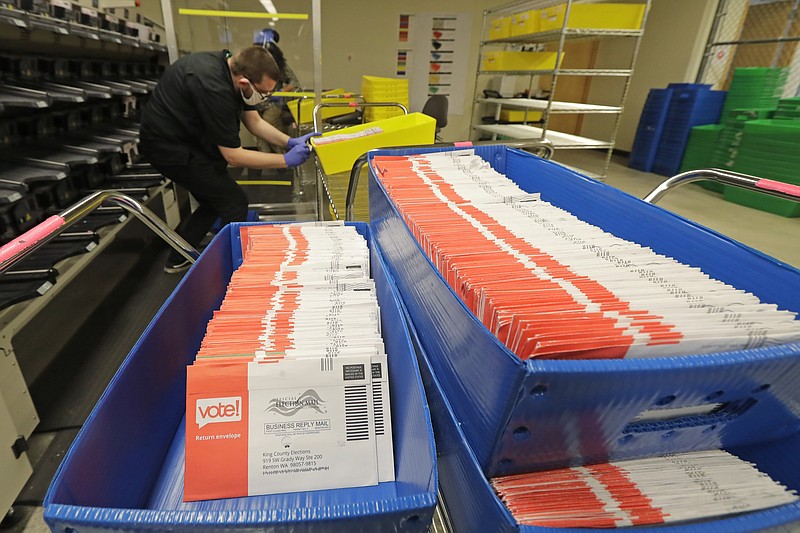BOSTON (AP) — Brace yourself for what’s expected to be the first U.S. presidential election conducted mostly by mail. It could be messy.
Amid the coronavirus pandemic, voting by mail in a contactless and socially distant way seems like a no-brainer. States have made the option widely available — only 10 now require voters to provide an excuse beyond fear of COVID-19 when requesting a ballot by mail — and some three in four Americans are expected to embrace the option for the Nov. 3 presidential election, up from one in four in the 2018 contest.
But running a vote-by-mail election is surprisingly complicated, and there’s a lot of room for things to go wrong. Validating and counting a deluge of posted ballots in an open and accountable way presents a major challenge, one that only about a half dozen states are fully prepared for.
It doesn’t help President Donald Trump has waged a vigorous offensive against the idea via a barrage of baseless tweets alleging the imminence of massive voting fraud. Turmoil in the U.S. Postal Service has only heightened concerns surrounding the ability of the nation’s myriad election systems to manage a presidential vote.
Oregon, Colorado and Washington have held successful all-mail elections for years, and others including Florida and California expanded capacity long before the pandemic. Nearly everywhere else, the technical and logistical challenges loom large for budget-squeezed election officials with limited experience.
Chaotic events during this year’s primaries did not instill confidence. Untold thousands of absentee ballot requests went unfulfilled, and tens of thousands of mailed ballots were rejected for multiple reasons including arriving too late to be counted.
“The system is buckling under the weight of the dramatic surge and demand for absentee mail ballots,” said Wendy Weiser, director of the democracy program at the Brennan Center for Justice. “It hasn’t been built to withstand that high of a volume.”
Among the major concerns:
• Although Congress has sent $400 million to help states deal with pandemic-related pressures on election systems, it’s well short of the estimated $2 billion experts say officials need to be ready for November.
• Not all states are equal when it comes to letting voters fix mistakes that lead to rejection of their ballots, such as failure to sign the mail-in envelope. In a New Jersey special election in May, a whopping 10 percent of mailed ballots were rejected.
• The rapid introduction of new technologies and processes in state voting systems heightens the risk of foreign interference and insider tampering. That’s true even if simple human error or local maneuvering for political advantage are more likely threats.
• The slower count of mailed ballots could clash with voter expectations of a clear Election Night winner. Election officials have already warned voters across the country that it could take days after the polls close to count all the votes.
• In general, voting by mail is much less forgiving than the in-person method, where a voter’s identity is verified on the spot and any difficulties can be handled by poll workers.
To ensure success, all the pieces of mail-in balloting systems have to be in place well before Election Day. That’s because processing absentee ballots is a complex, multi-step process in most states: Voter fills out application, mails it to local election office; local election office verifies voter’s eligibility, sends back ballot; voter completes ballot, signs envelope, returns it. Election office verifies ballot’s authenticity, counts it.
“The more complicated we make the ballot-casting process, the more stuff is going to go wrong,” Wisconsin activist Karen McKim said.
Election management in Wisconsin is as decentralized as it gets, relying as it does on 72 county clerks, 1,850 municipal clerks and thousands of poll workers. McKim said it’s “unrealistic and unfair” to expect those workers to be ready for a flood of absentee ballots in just a few months.

